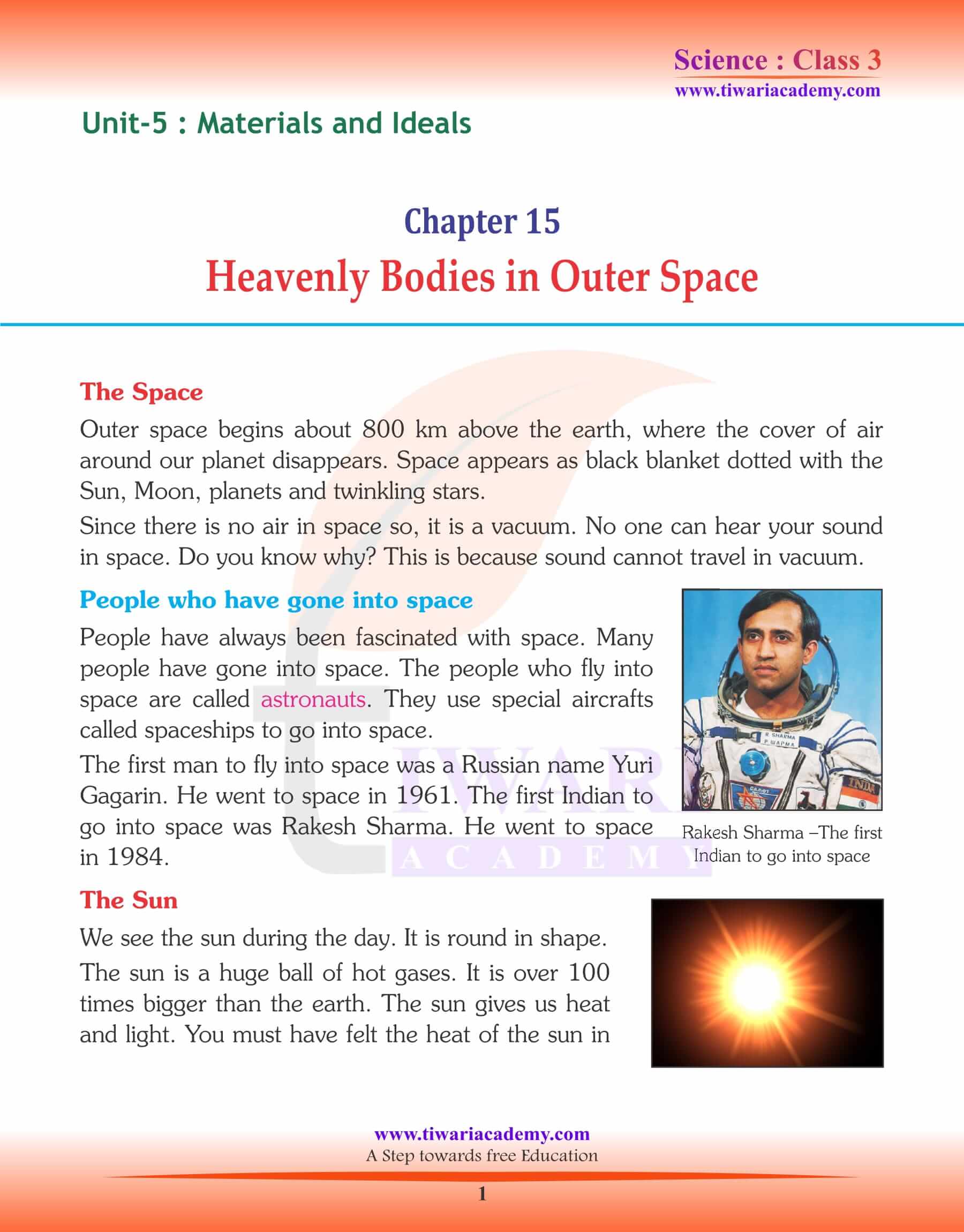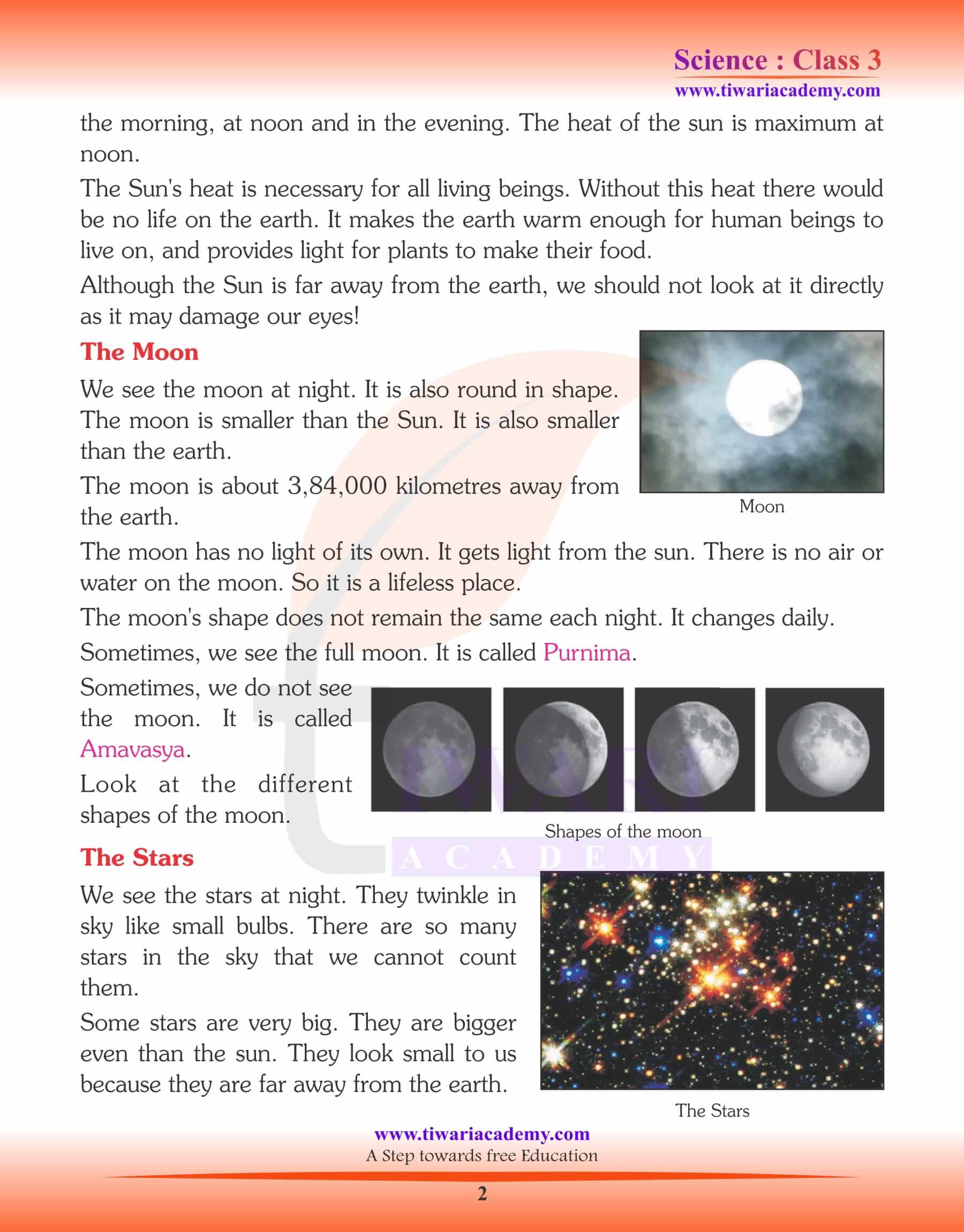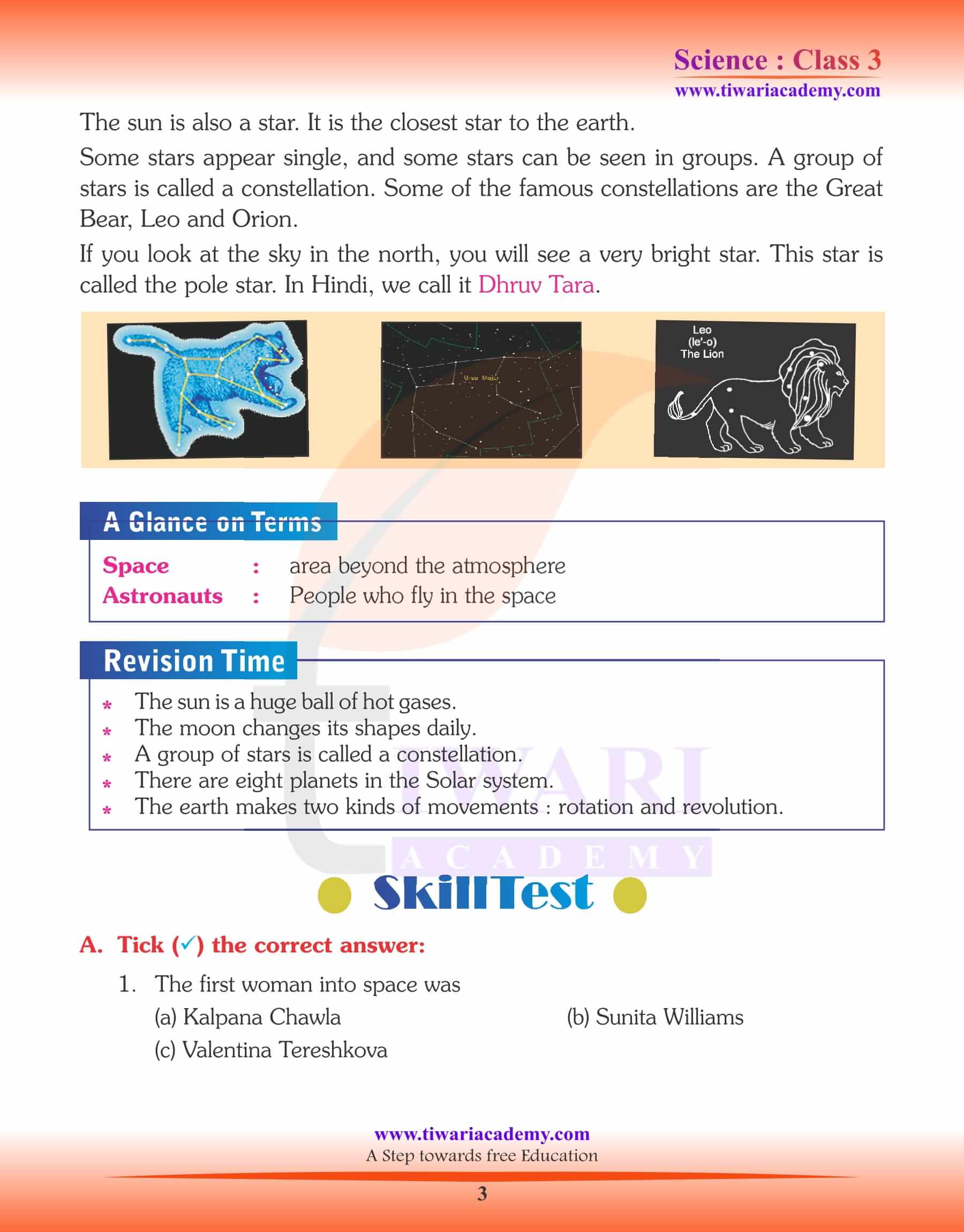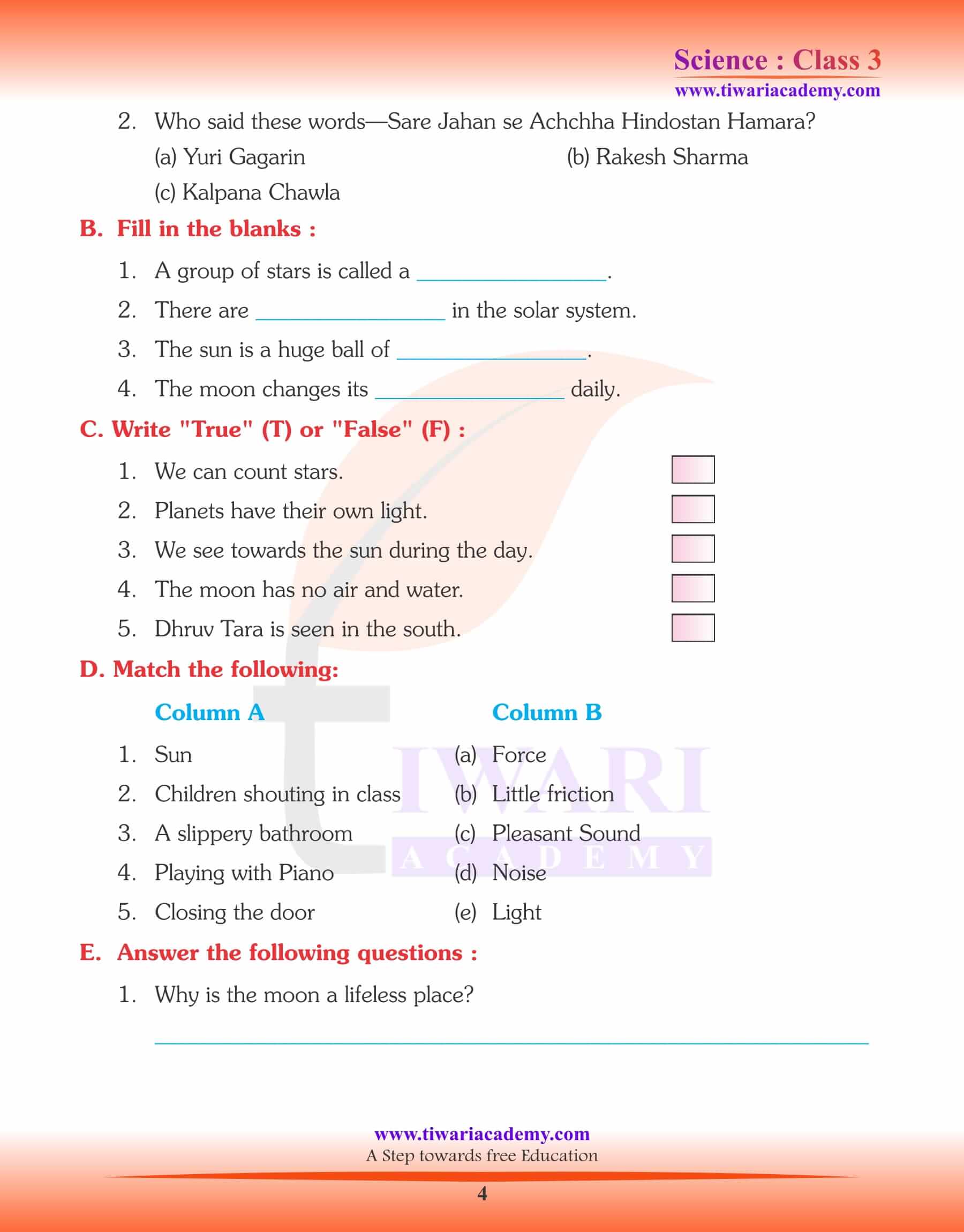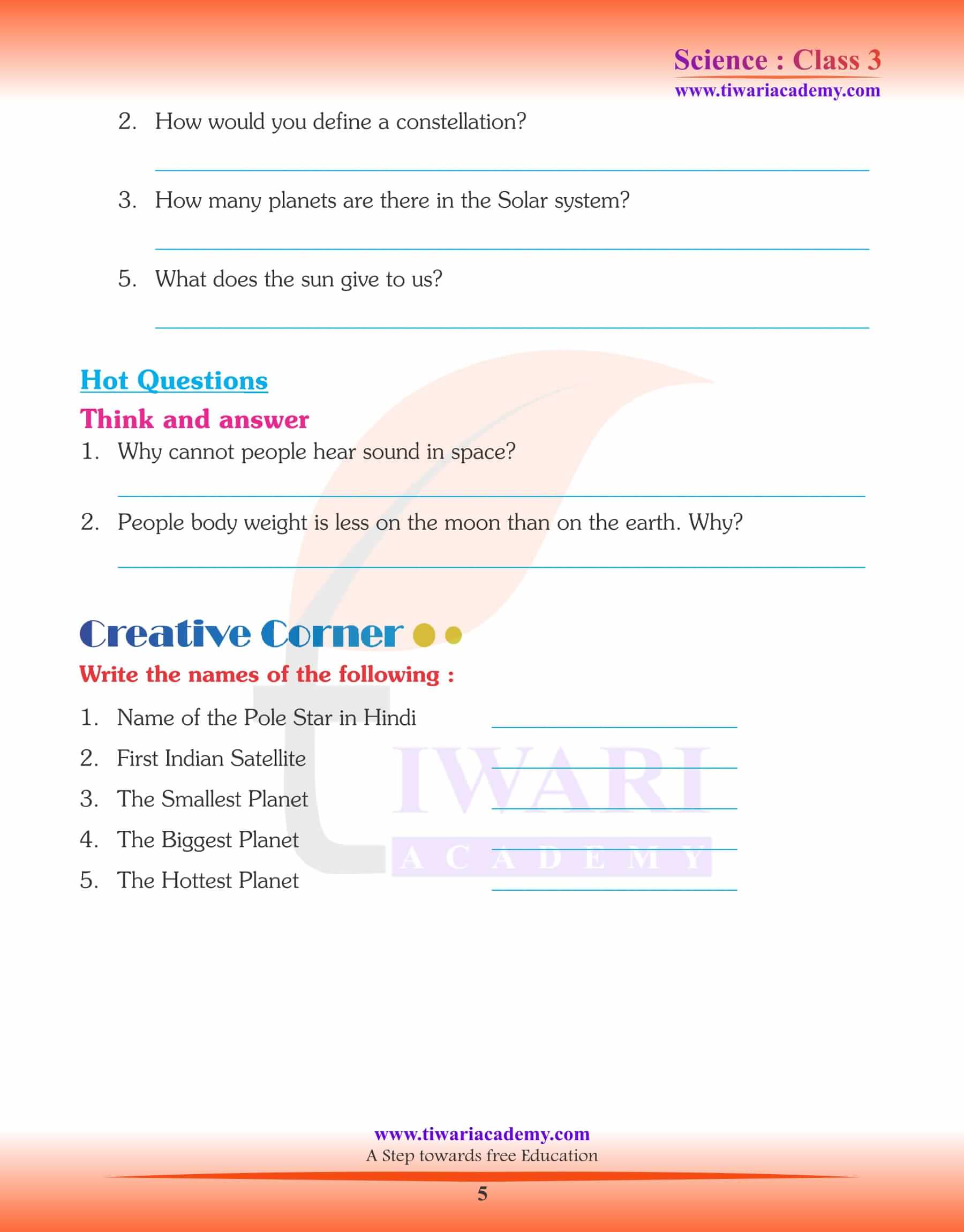NCERT Solutions for Class 3 Science Chapter 15 Heavenly Bodies in Outer Space with assignments. The Science contents for grade 3 are in updated format for the new session 2025-26. It is free to use for all the students and teachers. So, state reading the Science book for class 3 and work out the questions given at the end of chapters to revise. It is helpful to understand the bodies present in the universe.
Study Material for Class 3 Science Chapter 15
Class 3 Science Chapter 15 Heavenly Bodies in Outer Space
The Space
People who have gone into space
Outer space begins about 800 km above the earth, where the cover of air around our planet disappears. Space appears as black blanket dotted with the Sun, Moon, planets and twinkling stars. Since there is no air in space so, it is a vacuum. No one can hear your sound in space. This is because sound cannot travel in vacuum.
It is very difficult to go beyond the earth’s atmosphere. It is because the earth pulls everything towards it. Scientists have developed a special machine called the space rocket to go into the space. The space rocket carries a spacecraft to the space. Astronauts travel in the spacecraft. The first man to fly into space was a Russian name Yuri Gagarin. He went to space in 1961. The first Indian to go into space was Rakesh Sharma. He went to space in 1984.
The Sun
The sun is a huge ball of hot gases. It is over 100 times bigger than the earth. The sun gives us heat and light.
The Moon
The moon is smaller than the Sun. It is also smaller than the earth. The moon is about 3,84,000 kilometres away from the earth. The moon has no light of its own. It gets light from the sun. There is no air or water on the moon. So it is a lifeless place.
The Stars
There are so many stars in the sky that we cannot count them. Some stars are very big. They are bigger even than the sun. They look small to us because they are far away from the earth.
Important Points
1. A thick layer of air surrounds our earth. This layer is called atmosphere.
2. The region beyond the earth’s atmosphere is called the space.
3. The earth applies force of attraction to everything. This force of attraction is called gravity.
4. A space rocket carries a spacecraft to the space.
5. Neil Armstrong was the first man to land on the moon.
6. Kalpana Chawla became the first woman of Indian origin to go into the space.
Select correct options for given questions:
Who was the first Indian to go into the space?
What does carry a spacecraft to the space?
What was the name of the spacecraft in which Neil Armstrong went to the moon?
Who holds the record of the longest spaceflight for female space travellers?
Moon’s gravity is ___________ of the earth’s gravity.
Fill in the blanks:
1. A group of stars is called a _____.
2. There are _____ in the solar system.
3. The sun is a huge ball of _____.
4. The moon changes its ______ daily.
Answers:
1. constellation
2. eight planets
3. hot gases
4. shape
Write “True” (T) or “False” (F):
1. We can count stars.
2. Planets have their own light.
3. We see towards the sun during the day.
4. The moon has no air and water.
5. Dhruv Tara is seen in the south.
Answers:
1. F
2. F
3. T
4. T
5. F
Why is the moon a lifeless place?
There is no air or water on the moon. So it is a lifeless place.
What does the sun give to us?
Sun gives us heat and light.
How many planets are there in the Solar system?
There are eight planets in the solar system.
